Plastics: climate friend or foe?
Surely a day doesn't go by without you using plastic. It's a marvel of material science. But hidden behind its convenience, plastic poses serious environmental challenges. Is this versatile and ubiquitous material contributing to the climate problem or helping us solve it? Plus, in the news this week: as Omicron spreads across the globe, we get the low-down on how the new variant differs from those we have already seen, one researcher thinks he might have fouind our solar system's missing 9th planet and printer-ink that 'lives'!
In this episode

00:58 - The new COVID variant: what is Omicron?
The new COVID variant: what is Omicron?
Sharon Peacock, University of Cambridge
The World Health Organisation have given it the name “Omicron” and labelled it as a “variant of concern”. It’s a new Covid-19 variant spotted first by scientists in Southern Africa and now it’s spreading internationally…
Sharon - We only need to go back about 12 days ago, when cases in South Africa numbered 273 for the day. But what happened after that was a rapid rise in cases. 3 days ago there were more than 1,200 cases and yesterday there were more than 3000 cases. It's the rate of rise that really alarmed the ministry of health in South Africa. When they looked to see where these cases were rising, it was in one particular part of South Africa called Gauteng Province. What the ministry of health and scientists did was to target genome sequencing of positive samples from people living in the area and that is how they identified a new variant not seen before, which has a numerical name B.1.1.529, but which the World Health Organisation have gone on to call Omicron.
Chris - Obviously the genetic code can speak volumes about the likely behaviour of a particular viral variant. When you look at the genetic code of this new variant are there any illuminating features?
Sharon - Something that is very striking is that this is the most mutated variant that we've seen today. It's got around 50 mutations in the entire genome, but about 30 of those are really focused on this spike protein. That's the part of the virus that interacts with human cells as it's kind of gaining entry into the cell. We know that that spike protein has got a large number of mutations, more so than previous variants of concern, and several of the mutations we've been able to identify have been seen in other variants of concern that have been linked to increased transmissibility and immune evasion. But there are actually a lot of mutations in this new variant where we don't know whether they'll alter the biology of the virus or not.
Chris - Why would genetic changes in that spike region make us worried? What could they do to the spike which would make that the virus is either worse, more transmissible or does things with vaccines?
Sharon - A change in the genetic code or a 'typo' can actually lead to a change in the amino acid, which is the building blocks of life, and then change the way the virus structure is. That change in structure can change the way it interacts with our cells. It could mean that the interaction with the receptor that it needs to bind onto in the human is different. It could mean that the virus is better able to replicate in cells. So there are a range of ways that the virus can become fitter and it's those mutations that really change the building blocks of the virus and the way it interacts with us that can make a difference.
Chris - Is there any evidence yet from talking to the doctors looking after these 3000 plus cases in Gauteng in South Africa as to the behaviour of the virus? Is it any worse? Is it the same? Is it different to what we're seeing with the Delta virus, which is the dominant variant we've got around the world at the moment?
Sharon - Certainly clinicians that are treating these particular patients have said that they think that they have different sets of symptoms and that their symptoms are less severe. But I think we have to be quite cautious about whether that information is relevant to the UK. The demographic of that region is that the population is younger overall. They have a lower rate of vaccination of the population. The total population with two jabs of the vaccine is 24% and I think that we have to be cautious about whether this is going to cause less severe disease, the same severity of disease, or even at the other end of the spectrum, more severe. We need to do studies very urgently to identify whether these kinds of anecdotal observations are actually the case in the UK.
Chris - And finally, what experiments do we now need to do then in order to learn what threat this does or doesn't pose to us?
Sharon - There's two types of things that we need to do. The first is experiments in the lab, so we need to look whether the virus is neutralized by antibodies i.e. if we have antibodies to the virus, are they less effective at coating the virus and really making the virus less able to interact with ourselves. Neutralisation we need to do, and other types of live experiments to see how this virus interacts with ourselves. The really important studies are also real-world studies. We need to see whether, for example, this does cause a different type of severity of disease by actually observing a severity of disease. We need to look at whether people who've had natural infection before or vaccination are going to be infected with this particular variant or not. These are the critical real-world studies to look up where the vaccination, efficacy and disease severity are affected in any way.
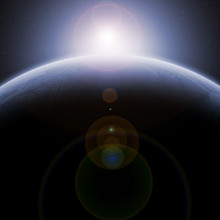
07:26 - Planet 9
Planet 9
Michael Rowan Robinson, Imperial College London, Meg Schwamb, Queen's University Belfast
Since the demotion of Pluto from a planet to a dwarf planet in 2006, our solar system has had a vacancy for a 9th planet. We have reason to believe that a ninth planet exists, but no one has ever seen it...perhaps until now. Astrophysicist Michael Rowan-Robinson from Imperial College London has been looking through decades-old data that had previously been thrown into the proverbial trash pile, and has discovered a mysterious object that he reckons could be a new planet...
Michael - I set out to find the postulated 9th planet, which has been proposed to explain the motion of dwarf planets in the outer solar system.
Sally - The search for the 9th planet. It sounds just like the plot of a sci-fi novel, but it's something astrophysicists are very seriously looking for. I'm sure you were all as deeply as upset as I was when Pluto was demoted from planet to dwarf planet status in 2006, but that was because physicists realised that there were thousands of these Pluto like objects or 'planetesimals' flying around in this part of the solar system. Meg Schwamb from Queen University Belfast studies these objects and explains that something in their behaviour just isn't quite right.
Meg - There's sort of a set of planetesimals that have been recently discovered that seemed to be all aligned and being found in one part of the sky. For that to happen there needs to be a big mass still around in the solar system. I like to think of it like sheep. The sheep dog is keeping everybody in line. That's led people to really think about this planet 9 theory that's proposed. Can we find that sheepdog? Should we look?
Sally - This question of, 'is there a 9th planet that we don't know of yet' has been puzzling astrophysicists for a long time. For Michael it's perplexed him for decades?
Michael - I have been interested in the idea of a planet in the solar system since 1983. In 1983 I was working on the IRS space mission.
Sally - This IRAS satellite looked for objects in the infrared range, looking for the tiny amount of heat given off by distant objects. At the time everyone thought planet 9 would be a large planet at the furthest reaches of the solar system, corralling all of those little planetesimal sheep. But after failing to find any good candidates in the data, Michael wondered what if planet nine isn't far away? What if it's just small with these new criteria in mind Michael looked through all of the satellite observations that had previously been discarded.
Michael - So I was left with about a hundred odd cases. I eliminated most of them and I was just left with this one case, which I just still can't rule out. That is my candidate.
Sally - Does that mean it's a planet?
Michael - That's an interesting question. It's about the right sort of distance. It's about the right sort of mass. It's extremely close to the plane of the Milky Way, which makes it very difficult to observe and it makes the detections that I have doubtful because it could be that they are just a cell of dust. But it's there. It's the best that I could find in this vast search.
Sally - If you're a gambling man, how likely would you say this is another planet?
Michael - It varies from moment to moment and day to day. When I drafted the paper I said, 'I suppose the reality is perhaps 50%' but some days I wake up and think it's 1%. I just can't say.
Sally - And what do other scientists think? Could this mystery object be the 9th planet physicists have been looking for for so long? Meg Schwamb.
Meg - I don't think there's enough evidence to say it is. I think it's interesting. If it's real, we will hopefully be able to detect it with a proven observatory and see it moving in optical wavelengths. I'm excited either way. It helps us understand more about our solar systems. It's okay if it turns out not to be real. It could be super exciting if it was but I think either way we reveal something new about our solar system.
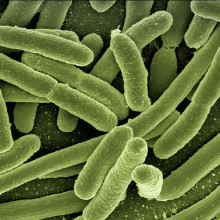
12:07 - 3D printing living ink
3D printing living ink
Neel Joshi, Northeastern University
Who’s seen the movie Flubber, with Robin Williams? Remember that wacky, green, jelly-like substance that comes alive and starts bouncing around breaking everything it encounters on its path? Well that’s not quite the direction science aspires to go, but a team of researchers at Northeastern University have successfully genetically programmed bacteria to make a printable ink that can be used in a 3D printer. Using this ink, they have created a gel that isn’t green and it doesn’t bounce around crazily against the walls, but it is alive because it contains living cells that can release therapeutic drugs or remove toxins from their surroundings. Iacopo Russo heard from Neel Joshi how it works...
Neel - It starts with genetic engineering of e-coli
Iacopo - Is that the bacteria we have in our intestines?
Neel - Yes. It's found in your intestines and in soil. We introduce new genes that didn't previously exist in e-coli and then we tell the cells when to produce a customized protein polymer that would assemble in multiple dimensions. Individual protein is like a building block, a 'bead'. That bead is going to assemble into this fibre, like many beads on a string, that fibre will intern bundle into larger structures.
Iacopo - Okay. What does it look like in practice? If I entered your lab what would I be looking at?
Neel - You would be looking at a lot of bacteria growing in an incubator. We load the material that comes out of those bacteria into the 3D printer setup.
Iacopo - When you say 3D printers, do you mean the ones that some people now have at home?
Neel - Yes. Very similar to that, the only difference is that our mechanism of printing doesn't involve heating. We designed the material that we made so that it's firm enough to hold its own weight when it's resting. But then when you apply pressure to it, it will flow like a liquid. I think everybody's familiar with this concept in the form of toothpaste, which is stuck in the tube. It will flow if you apply pressure. We designed our materials to have similar properties, and then we use pressure to do the printing rather than heat.
Iacopo - What kind of things have you made? What does it look like when it comes out of the printer?
Neel - A clear gelatine-like substance. Like jello with no food colouring in it. It's composed of our engineered cells and the custom protein polymer that they produced.
Iacopo - But jello is dead in a way, there's no living thing in it, whereas your material has living cells in it. What can these cells do?
Neel - We can not only program the ability to make the ink into the cells, but we can also introduce other features that you might find in a living system. For example, cells that can respond to their environment could release some drug or they could bind and remove some pollutant from their surroundings, or they could even undergo a process of cell suicide inside the material, if we wanted to limit the spread of those cells into the surrounding environment.
Iacopo - Right. Because this thing is alive and it's made of microbes and usually we want to defend ourselves from microbes whereas you've created something out of microbes.
Neel - We are certainly careful to use only non-pathogenic lab strains and I think that this is a realistic way to make materials in a scalable manufacturing context. It's already done in some cases with insulin, perhaps being the example that's been around for the longest.
Iacopo - This already sounds like science-fiction, but what's the wildest application you can envision for the future?
Neel - One of the things that's kind of obvious as a place that this could be particularly useful is for building structures in space organizations like NASA have already started planning for how they would build structures and habitats in extra terrestrial environments.
Iacopo - So we're talking about when we colonize Mars?
Neel - Yeah. Mars or the Moon, or perhaps on a space station. In all those contexts, 3D printing comes up repeatedly as a very versatile way to make multiple different buildings or structures or basically whatever you want. A problem with that is that it would be cost prohibitive to ship tons and tons of plastic for using a 3D printer. You would need a way to make your printing ink locally. The way to do that is really with microbes. You could take a few microbes with you in a small vial and then kind of make what you needed from those microbes.
Jassy - At the Royal Horticultural Society, we have a 'members advisory service' where people send us pictures of things that are going on in their gardens and ask for advice about them. One thing we've noticed this year is that we've had 76% more inquiries about saprophytic fungi, which grow on dead material, than we did last year. It's usually with the angle of, 'what is this? I'm afraid of it. Is it going to cause harm? How do I get rid of it?' We're trying to educate them to say, 'well, there's very few things that are out there that are going to be causing any harm to your garden. The overwhelming majority will be doing a good service by rotting down dead material.' This is the type that we've seen so many more of being sent into us this year and in doing so that liberates the nutrients locked up in that woody material.

16:27 - Much-room for mushrooms this autumn!
Much-room for mushrooms this autumn!
Jassy Drakulic, Royal Horticultural Society
This summer and autumn we saw a lot of rain. Not good news for those who booked a staycation, but it's been a bumper year for certain fungi species. Jassy Drakulic from the Royal Horticultural Society tells Harry Lewis what you might have seen sprouting out of your gardens.
Jassy - At the Royal Horticultural Society, we have a 'members advisory service' where people send us pictures of things that are going on in their gardens and ask for advice about them. One thing we've noticed this year is that we've had 76% more inquiries about saprophytic fungi, which grow on dead material, than we did last year. It's usually with the angle of, 'what is this? I'm afraid of it. Is it going to cause harm? How do I get rid of it?' We're trying to educate them to say, 'well, there's very few things that are out there that are going to be causing any harm to your garden. The overwhelming majority will be doing a good service by rotting down dead material.' This is the type that we've seen so many more of being sent into us this year and in doing so that liberates the nutrients locked up in that woody material.
Harry - What have people seen more of in their garden, what species and how do we identify them?
Jassy - I think on a mass level, I've seen so many more inkcap mushrooms coming in this year than I have before and inkcap mushrooms are really wonderful because they're very varied, but what they all do is after the mushrooms have formed, they then 'della ques', which is a fancy word for dissolve. They then turn into black ink, which are droplets of spores which can range in size from really robust shaggy inkcap mushrooms, which I think they look like a big white club when they're first growing up and they're all kind of flaky and hairy on top and reach over a foot in height. On the flip side of things, you have very dainty, delicate hairs for ink caps. They start off as this little hairy foot that comes up on a tiny stalk and it's only there for a few hours in the day, usually from the dewy morning and then by lunchtime, they're gone and they're just so fleeting and so delicate. I think they're just really charming.
Harry - You painted a fabulous picture there Jassy. At the moment, with years to come, are we expecting different fungi to pop up in different areas? Are we expecting more fungi in general?
Jassy - The fruiting season for fungi has increased dramatically over the last 30 years, we think because of the changing climate, and that's affected different groups of fungi in different ways. When we look at the 'wood rotters', it seems like there's more of those species that have increased their fruiting season. So you'll be seeing them earlier in the year and also for a longer time during the autumn. In contrast to things like the mycorrhizal fungi and fungi that associate with the roots of plants and help them take up nutrients and water, their fruiting season seems to be shortening.
Harry - And we've come to what feels like the end of the fungi season. Am I right in saying that as we go into winter, is there anything that people can be looking for or harvesting sustainably?
Jassy - The Jewelled Amanita that only really comes up, once the first frost has hit, and it signifies that winter is coming. Even honey fungus really prefers the later part of the autumn. And then there's some more friendly wood rotting, funky ones that are also edible, like the oyster mushrooms that do quite well throughout the very cold, cold spell. And whilst these are edible, we'd always make sure people if they are going to go out and look for things to eat, that they do so responsibly, not just for their own health, but if you are picking things, not to completely clear, cut everything that is there and just to take a few specimens for your table to have a chance to spread their spores first.

20:35 - Why do we overeat?
Why do we overeat?
Nick Betley, University of Pennsylvania
Now Christmas is on the way and, as the old saying goes, “your eyes are often bigger than your stomach”. So true for many of us. But it turns out that a miscalculation in a set of nerve cells in the brain’s appetite and reward system could be what triggers overeating. Julia Ravey spoke to Nick Betley, at the University of Pennsylvania, to hear what he has in mind...
John - Because of these highly caloric, highly palatable foods, people end up eating just a little bit more food than they should every day. And by eating just a little bit more food every day for a long period of time, you put on a lot of weight. So in our study, we took advantage of the fact that there are people who have a genetic disorder known as Prader-Willi syndrome. One of the consequences is they have an insatiable appetite. We reasoned that they must be missing a neuro-signal for satiation in the brain. There must be something different about their brains from everybody else's. We compared neural activity in the brain of individuals with Prader-Willi syndrome, to individuals who don't have this syndrome. And it turns out that in control subjects, the cerebellum is activated by food chews and hunger and Prader-Willi syndrome individuals are completely missing that cue.
Julia - How did you find out what this region of the brain does?
John - The cerebellum is typically known for being involved in motor function and coordination, but never before has the cerebellum been implicated in food intake and food intake control. Based on finding the signal in Prader-Willi subjects, we transitioned our research to rodent models where we could go inside of the brain and manipulate neural activity. We found a subset of neurons in a very discreet region of the deep cerebellar nuclei, that when activated actually limit the animals meal size about 75% in that individual meal.
Julia - Did this alter the behaviour of the mice in any other way?
John - We know that the cerebellum's involved in a lot of other behaviours, specifically things like motor behaviour. So we were worried that maybe the animal wasn't eating as much because the animal wasn't moving as well. We performed a series of experiments to make sure that motor function was intact so these animals can run like a normal animal.
Julia - Where the cells are active, do you think these mice enjoyed their food as much?
John - What we found is that the cerebellum is actually interfacing with the reward system to reduce the reward value of additional consumption. This would be like you stopping eating peas and rice because you've had enough of food and you're homeostatically sated, but if your cerebellum is more active, it would reduce the reward value of even things like chocolate cake.
Julia - Do you think the cells might operate in a similar way in humans?
John - Yeah, that's what we think is so exciting about this study. We started with a human task-based FMRI study. We went into the mouse brain to identify the precise neurons, to understand every molecule in these neurons, to try to understand how they influence neural activity in other regions of the brain. But now that we've understood all that, maybe we can pull back and go back to the humans and see if activating these neurons in the human brain will actually reduce meal size. And so could you imagine if we could develop a hat with some magnets in it that you could put on before you eat your meal that reduces the size of your meal by say 25% and you just eat a little bit less every day without feeling hungry, this would be a great way to lose weight. So maybe that piece of chocolate cake at the end of your meal will be slightly less palatable, and maybe you will have a smaller piece of chocolate cake. So you'll still be able to enjoy life. You just won't eat past your homeostatic checkpoint.
Julia - Do you think these results can help change the stigma attached to obesity?
John - I think it could change the stigma attached to obesity and other neural disorders in general. I think knowing that food intake control is regulated by neural circuits in the brain and that the activity in these neurons that is independent of an individual's willpower is actually controlling or modulating how much food an individual eats, is powerful information. And so by better understanding how these circuits work, we have the potential to really change the way people think about obesity and really understand it as just another type of disease. Just as if you had a heart disease.
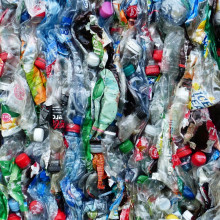
26:22 - Plastics everywhere, what about emissions?
Plastics everywhere, what about emissions?
Judith Enck, Bennington College
Plastic has become so ubiquitous in our lives, particularly in wrapping many of our essential food items in the supermarkets. But is there a hidden emissions side to all this single-use plastic we use to preserve our food? Verner Viisainen found out by taking a trip to his local supermarket before talking to Judith Enck of Bennington College about a new bombshell report looking at the emissions of plastics production.
Verner - On my way home from workt, I go into my local supermarket in the centre of Cambridge to pick up some ingredients for my dinner. Tonight I'm planning to make some spaghetti bolognaise. From my shopping list, I need some mince, fresh tomatoes, carrots, garlic, onions, celery, and of course some spaghetti. Let's see what I can find. As I wonder around the vegetable aisle I found my first ingredient. It's some celery and some plastic. I then find my next ingredient. Carrots and plastic. Next to them is some tomatoes, also nicely wrapped in plastic. Some onions, still plastic. My final vegetable is garlic wrapped in a plastic fleece. Now that I've got all the vegetables, I come around the corner to look for my mince. Every single one is wrapped in plastic. Finally, the pasta aisle has me looking for my spaghetti on the bottom shelf. Spaghetti and plastic. It's a plastic full house. All this plastic packaging has really got me thinking, can we live without plastic? Would using less plastic reduce my carbon footprint? Could cutting my plastic consumption help address the climate crisis? David Attenborough opened our eyes globally to the challenges presented by plastic pollution and the effect it has on our marine ecosystems.
David Attenborough - "We hoped that 'Blue Planet 2' would open people's eyes to the damage that we are doing to our oceans."
Verner - In fact, we release 15 million metric tons of plastic every year into our oceans. That's equivalent to the mass of more than a million double decker buses. That's the only issue with plastic, right? That we produce too much of it and it has to go somewhere, so we end up with a lot of waste. Well, no, not according to Judith Enck and her new bombshell of a report.
Judith - What a lot of people may not realize is the intimate connection between plastic production and climate change. So my organization 'Beyond Plastics' issued a new report called 'The New Coal: Plastics and Climate Change' where we detail the connection between plastics and greenhouse gas emissions.
Verner - And what did you find exactly in terms of the emissions from plastics?
Judith - It is significant. Overall, the report found that the U.S. plastics industry is responsible for at least 232 million tons of greenhouse gas emissions into the atmosphere every single year which is the equivalent of the greenhouse gas emissions coming out of 116 average sized coal fired power plants. Then we looked ahead as coal power plants continue to close and the plastics manufacturing infrastructure expands in the United States. The plastics industry's contribution to climate change will exceed that of coal plants in the United States by 2030. We found that plastics is the fossil fuel industry's plan B.
Verner - How did you go about calculating the emissions?
Judith - Most of the data actually comes from the plastics industry and is reported to federal agencies. We relied a lot on existing data. We just did the hard work of pulling it all together.
Verner - So could you go through the different steps and outline the emissions associated with each and how they come about?
Judith - You have to look at production use and disposal. We looked first at fracking, basically it's a new cheap way to access gas. What happens at fracking sites is large amounts of water and chemicals in sand are injected underground to shake up the underground area. Gas is released through fishers in bedrock, the gas is brought up to the surface and then captured as an electricity source. Part of that process includes flaring of ethene into the atmosphere and ethene is a potent greenhouse gas. Flaring it is not good, but what we're seeing in some select areas is capturing that ethene and sending it by pipeline to these ethene cracker facilities. That's why there's such an increase in the use of plastic in the United States, it's because of hydrofracking. On the fracking step, the amount is about 36 million tons of greenhouse gases a year, that's roughly equivalent to the release of 18 average size coal fired power plants. Then the real big one we examined was ethane crackers, these are central players of plastic production, where fracked gas is superheated until the molecules crack into new components. So you take the waste gas, you send it by new pipelines to these newly constructed ethane cracker plants, and they release roughly 70 million tons of greenhouse gases in 2020. That's the equivalent to the release of 35 average size coal fired power plants. However, the key thing on this point is that major expansion of these facilities is planned and we think that by the year 2025, we'll be looking at 42 million additional tons of greenhouse gases, which is the equivalent to 21 coal fired power plants. We then looked at exports and imports. The ongoing plastic build-out in the United States is not just for US consumption, there are these very large tankers. A tremendous amount of ethylene gas is shipped by tanker to cracker facilities in India, China in Europe, right after it's extracted from beneath the state of Texas, and that is all to create single use plastic packaging.
Verner - So how'd you attribute these emissions to plastic, if it seems that the ethane is a byproduct of getting this gas out of the ground for electricity?
Judith - Well, because the ethane that is captured and sent to ethane cracker facilities is to create more single use plastics. We're not saying in the report that all of hydrofracking is associated with plastic production, because as noted a lot of it is used for electricity generation, but there's this unknown element of fracking that links it to plastic production and because there's a glut of fracked gas on the market, we're seeing more and more of this gas being used to make plastics.
Verner - Can you make plastics from other fossil fuels?
Judith - Yes. Historically plastic was made from chemicals and oil, and now it's made from chemicals and fracked gas.
Verner - So any fossil fuels can be turned into plastic one way or another.
Judith - Yes and oil is a problem as well. Plastic production and fossil fuels are attached at the hip. You don't have one without the other.
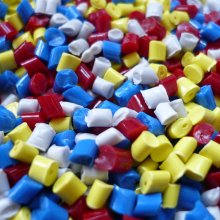
34:20 - Why do we have so much plastic in the world?
Why do we have so much plastic in the world?
Nicola de Blasio, Harvard University
Given the large amounts of emissions associated with plastics and the pollution they are causing in our oceans, it begs the question why do we have so much of it in the first place? Verner Viisainen spoke to Nicola De Blasio from Harvard University to find out more about what makes plastic such a useful material
Nicola - From a chemical point of view, plastics are made up of one or more polymers. There are long chains of carbon atoms and include the well-known names, such as polyethylene, which we use in food packaging, automotive parts, and even bank notes, or polyethylene terephthalate (PET) Which is used in plastic bottles.
Verner - Why do we have so much plastic in the world today?
Nicola - We have a lot of plastic because plastics have enabled modern life. As we know it, plastic is so ubiquitous in our daily lives that we do not give it much thought. Yet it is everywhere from clothing to chewing gums from teabags to whitening toothpaste from toys to plastic bottles. Up to 5 trillion single use plastic bags are consumed every year and 1 million plastic water bottles are sold each minute around the world. However, the lack of end-of-life consideration, and the high cost of recycling, have turned plastic into the victim of its own success and that's created a global environmental crisis.
Verner - We have plastic everywhere in our modern world, but what is it about plastic that makes it so useful?
Nicola - Because plastic is inexpensive, durable, and lightweight. They can be soft and pliable or hard and strong. They can withstand the extreme cold or heat and they can be corrosion or chemical resistant. If the physical properties of the plastic that we produce do not meet the desired requirements, they can be enhanced with an additive such as pigments, flame retardants, antioxidants, and so on.
Verner - Is it conceivable to imagine a world without plastic?
Nicola - We just need to look around us and the answer becomes pretty obvious. Today a world without plastic is really almost unimaginable. Plastic has moulded society in many ways that make our lives easier and safer, even more so during the COVID 19 pandemic. In the end the real question is 'how can we leverage the advantages of plastic without contributing to the world's environmental crisis?'
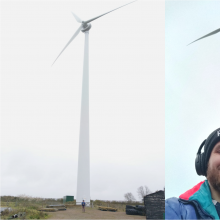
37:60 - Plastic in wind turbines?
Plastic in wind turbines?
Darshil Shah, University of Cambridge
Wind turbines are one surprising application where plastics are helping to fight the climate crisis. Darshil Shah from the University of Cambridge took Verner Viisainen to the wind turbine at the Wood Green Animal Charity in Godmanchester in Cambridgeshire to explain to him why plastics are essential for structures like the wind turbines.
Verner - Right Darshil, we're standing right next to the wind turbine, which parts are actually made of plastic?
Darshil - The tower is completely made from steel, but it's the blades where all the composite and the plastic materials are.
Verner - Why are plastics used for the blades?
Darshil - There are two key reasons why we have been making these out of reinforced plastics. Firstly, wind turbines become more efficient if the blade shape is particularly more aerodynamic. To form these efficient blade shapes, you need to be able to curve them and taper them and twist them in very specific profiles, which is manufacturable through reinforced plastics. The other key advantage of composite materials is also their great strength and stiffness to weight ratios. They're incredibly strong and stiff for their weight and this is important because the lighter the blade is, the whole turbine is more efficient in generating power, which is the whole purpose of a wind turbine.
Verner - You mentioned that these are not any old plastics, they're so-called 'composite materials'. So what are composite materials?
Darshil - In this case, we refer to them as reinforced plastics and usually they are fibre-reinforced plastics. The polymer itself can be synthetically derived from petrochemical sources. In this case, it is based on an epoxy resin. The fibres themselves are what are actually providing the stickiness and the strength. In this case, it is fiberglass that is being used. This blade is only about 25 meters in length weighing about 1 tonne to 1.5 tonnes, but blades can get much, much larger. Today's largest wind turbine is getting to about 14 megawatts of rated power with the blades themselves being 4x the length of this blade, but around 28 times the power capacity of this turbine.
Verner - These blades are made of plastic and we've heard the plastics have quite a lot of emissions associated with them, but also the wind turbines are providing us with renewable energy. So would you say this is a good use of plastics?
Darshil - I think this is definitely one of the better uses of reinforced plastics. The two main areas where plastics are using a lot of energy and consumption in their processing is firstly to do with their petrochemical sourced nature. These need to be converted into polymers. Firstly, and then for the fibres, if it's carbon fibre, you need to process these at really high temperatures. Therefore a lot of energy is going into the production of these high-performance fibres and they are reducing the amount of tower material you're requiring. So it is a good use of the resource, but we can do better.
Verner - It's a bit of a rainy and chilly day today. Should we move somewhere a bit warmer to continue the chat? Yes, definitely. I would like that.
Verner - We've come away from the wind turbine because it was a very dreary and rainy day today. And to cheer us up, I bought both of us some doughnuts, which we're about to enjoy. Then I wanted to run you through this analogy and see what you thought. 'Plastics to the earth are a bit like doughnuts to human health. We know that doughnuts are not very good for us if we eat too many of them, but they serve an important function because they taste oh-so-good.' This is a bit like plastic. If we use too much of them, they end up in the oceans and cause a lot of pollution and emissions. We need to be careful in the way that we use our plastics and use them in moderation a bit like how we should approach eating doughnuts. What do you think of this analogy?
Darshil - I think I can work with it. I like it. Just like we have doughnuts as a treat, I suppose we need to be more selective where we are using plastics. And if we think about it, plastics have really fantastic properties and that's why we do use a lot of it. We need to get better at both considering end-of-life possibilities of these materials, as well as on the other scale, how can we make more of these from bio-based resources?
Verner - We typically see plastic as a problem because it accumulates as waste, but this plastic in the wind turbines could keep spinning for many years. So why might this plastic represent a problem then?
Darshil - Partly because wind turbine blades have a defined lifespan. Usually that tends to be 20 to 25 years after which a wind turbine is decommissioned. It is completely brought down and you just replace it with a new one. We consume or at least produce two and a half million tons of reinforced plastic materials, specifically for wind turbine blades, every year.
Verner - How do these techniques for recycling reinforced plastics compare to the techniques used to recycle typical plastics?
Darshil - That's an interesting question because the classes of the polymers that are used in reinforced plastics, particularly for wind turbines and the plastics you get in packaging are different. The packaging plastics fall into a category referred to as 'thermoplastics', which effectively when you heat them they start to melt and then you can mould them into a specific shape. When you take away the heat, it retains the shape but amazingly you can then reheat these materials and form them into a new shape again. In contrast, the polymers that are used in wind turbine blades tend to be 'thermal sets'. These initially start off as liquids and then a polymerization process leads to a hardened and cured material, which is the shape that you end up with following moulding. Thermal sets are slightly more difficult to recycle because once they form this cured and hardened material, it's not a reversible process. Meaning the only way to deal with them tends to be either incineration or traditionally landfilling. There are some methods in which you can reuse some of these polymers to downcycle. For example, integrating them for making injection moulded materials. The complexity of recycling becomes even more increased when you introduce fibres. It's related to the problem that we have in conventional products of mixed plastics. If you have too many different types of materials together, you need to first spend energy in separating these materials beforehand.
Verner - So do we need to start making wind turbines out of thermoplastics to make recycling them feasible?
Darshil - Again, that's a fascinating question. There have been some efforts to make wind turbine blades with thermoplastics. The challenge with thermoplastics is that they usually start off as solids, which you then need to heat up. That's all-and-well if the component size is quite small, but if it's a wind turbine blade that is 25 meters long or 100 meters long, then that becomes really almost impossible because then you need compression moulding machines or presses and heated presses that will facilitate the fabrication of these large components. Therefore the possibility of making them with thermoplastics is quite small. Thermosets for a while will remain.
Verner - Thank you so much Darshil, this has been illuminating. Shall we head back to Cambridge now?
Darshil - Yes and have our doughnuts.
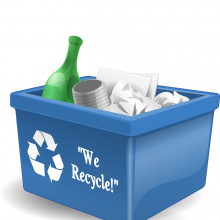
47:22 - Plastic recycling might not be the panacea
Plastic recycling might not be the panacea
Lee Bell, International Pollutants Elimination Network
Recycling plastics appears to be a challenge as a study from the University of California showed that only 9% of all plastic ever produced has been recycled. What could be the reason for this? Verner Viisainen spoke to Lee Bell from the organisation IPEN - or the International Pollutants Elimination Network - to better understand why this might be...
Lee - Largely because there's no real market for recycled plastics. Additionally, it is because of the problems associated with the actual composition of the plastics themselves. Most of them contain a variety of additives. Additives are incorporated into plastics to give them different colours, different textures, different flexibilities. When you go to process it through standard mechanical recycling processes, the problem is that the additives don't mix well, and even different types of polymers don't mix well because they contaminate the resulting material that comes out. Even with something that's relatively easy to recycle, like your standard plastic water bottle, it can only go through a few repeat processes of mechanical recycling before it starts to degrade significantly, so there's no such thing as an endlessly recyclable plastic.
Verner - What would you say are the carbon emissions associated with plastic recycling processes?
Lee - It varies according to the process. If you convert it to an oil fuel, which is what most chemical recycling does, you'd be looking at about another 200,000 tons of CO2 from that. If you look at incineration and some people consider burning plastic and incinerators a form of recycling because of the energy recovery, you're looking at about 1.4 tonnes of CO2 for every tonne of plastic entering that process. With mechanical recycling, you're essentially looking at the carbon emissions that result from operating the machinery. From a carbon perspective, mechanical recycling is the one that you'd want to support.
Verner - How would you say we can improve our rates of mechanical recycling?
Lee - I think the first issue is that producers of plastic need to restructure their operations so that they remove a lot of the toxic additives that are causing problems in terms of preventing plastics from being processed in large amounts. But at a broader level, we have to look at economic incentives to prioritize recycling using mechanical means, and that means placing some sort of a financial tax or other mechanism on virgin plastics because the cost of mechanical recycling is significant enough that it can't compete readily with virgin plastics.
Verner - And so taking all of this into account, do you believe that recycling presents the solution to the plastic crisis that we face?
Lee - No, I don't. I think the problem we have is the vast increase in production of plastic mechanical recycling cannot cope with the vast increases. I think we're looking at something like quadrupling virgin plastic production by 2050.
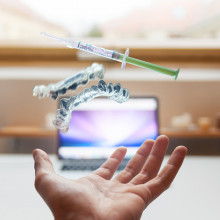
50:34 - What is the future of plastic?
What is the future of plastic?
Fredric Bauer, Lund University
Fredric Bauer from Lund University is an expert in plastics policy and recently published an article titled ‘Plastic Dinosaurs.’ Verner Viisainen spoke to him to find about more about the future of plastics and what we all can do about it...
Verner - We heard from Nicola De Blasio earlier about how plastics are everywhere in our modern society. But how did we end up in this position?
Fredric - The history of modern plastics is one that really took off after the second world war. In the 1950s, the petrochemical industry emerged and identified plastics. as a very interesting group of materials and really worked hard to find new ways of using plastics in many different domains of our everyday lives
Verner - Are the fossil fuel and petrochemical companies just responding to consumer demand, given how useful plastic is as a material?
Fredric - I would not say it's fair to say that production is only responding to demand. Rather there has been a very strategic effort to create demand and to shape demand in ways that really use plastics to a very large extent.
Verner - Judith Enck was mentioning that fossil fuel companies see plastics as their 'plan B' as the demand for petrol and fuel goes down. Do you agree with this?
Fredric - Yes. One of the trends we are seeing is that demand for plastics and other petrochemicals is one of the key drivers for oil and gas, now that the markets for petrol and diesel are decreasing more and more, we see oil firms investing very strategically, either themselves or in partnerships with plastics and petrochemicals producers. So they for sure seem to be betting on this as the plan B.
Verner - Earlier, we also heard about the extensive emissions that occur during the production of plastics. I know you use this concept of carbon lock-in in your work. Could you explain what carbon lock-in is and how this relates to the projected emissions from plastics?
Fredric - Carbon lock-in is a concept that connects the idea that technologies are used for specific purposes, but they are also strongly linked to regulations, institutions, and practices in society. Technology's become so embedded and they become part of our infrastructure for everyday life. Once we have created this path for how we use plastics, it's very hard to diverge from it. Instead it becomes self-reinforcing and the foundation for the carbon lock-in in plastics is that plastics are almost exclusively produced from fossil fuels. We are locked in to using fossil intensive plastics in many, many different ways in our everyday lives.
Verner - Given the problems we've heard associated with plastic, do we need to get rid of them altogether?
Fredric - I don't think that we should say that we can get rid of them. That would be foolish knowing that plastics are useful in many applications. However, we need to think carefully about where we use plastics to reduce demand growth.
Verner - Earlier in the show, I compared plastics to doughnuts in the sense that they both provide a useful function, but if used excessively, they can be detrimental to our environment and/or our health. How do we use plastics in a healthy way going forward?
Fredric - We need to think where we really need these properties that plastics have. We need to think about what it is that we really want to use these materials for, knowing that there are often many choices whether those be plastics, steel, other metals, which one would be most sensible to use in that particular application and which one would have the lowest environmental and climate impact. And that's a sort of trade off that we have to think of.
Verner - Could you give some examples of sensible or essential applications where we still need plastics going forward?
Fredric - Yes. I think it's fair to say that it's difficult to see modern health care, for example, completely without plastics, but there's still the question to what degree we want to use plastics, how much of the equipment that we use has to be single use and how much can be reduced sterilized, et cetera?
Verner - Earlier in the show we heard from Lee Bell about how plastic recycling might not be a suitable solution on its own to the plastic problem. Do you agree with this? And if so, what else should we be doing?
Fredric - Yes, the recycling systems that we have developed and deployed so far are not suitable for dealing with plastics in the way that we used them today. So just saying that we should scale up the recycling that we have, that will not be sufficient. That's quite clear. Instead, we really need to think about where and how we use plastics from the start. I think we should think about our consumption practices and how they relate to this exploding use of plastics, for example, textiles, where our consumption of clothes has exploded in the recent decades. That is to a very large degree connected to the availability of cheap polyester. So what do we really need to consume in terms of fast fashion, for example. On the other hand, I think it's also very important to see that this is not something that we are going to solve at the individual level. Rather, we really need to think about how to put pressure on the system.
Verner - If you had one recommendation for what individuals can do to put pressure on the system, what would it be?
Fredric - We should all recycle our consumables, but that's really just the bare minimum. What we can do instead is to get organized in different ways to put pressure on policymakers, decision makers, larger firms, that they should make the necessary changes on the higher level for how we really use plastics.
Verner - Just to end. What do you see as the future of plastics?
Fredric - Unfortunately, what we are seeing is that the industry is still to a large degree betting on unabated use of plastics and if we don't challenge that, it's likely that we will see this perhaps even quadrupling and demand for plastics. It would be based on primarily fossil sources with recycling, being a very niche marginal activity. However, there is also the opportunity that we can change it. We do have agency and we can shape our future in a different way than just extending these unsustainable patterns from the past, but that does require action on many levels. So in an ideal scenario, we are able to transform the way that we choose plastics to primarily use recycled plastics through different forms, but also then produce some virgin plastics for more sustainable sources.
Related Content
- Previous Cooling down rapidly warming cities
- Next Covid Surges in Europe










Comments
Add a comment